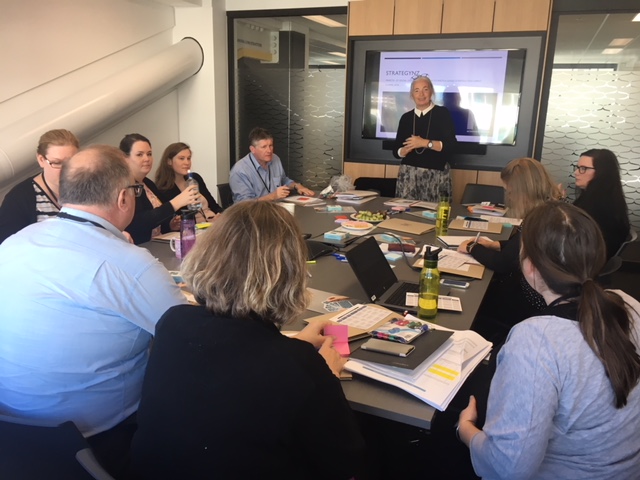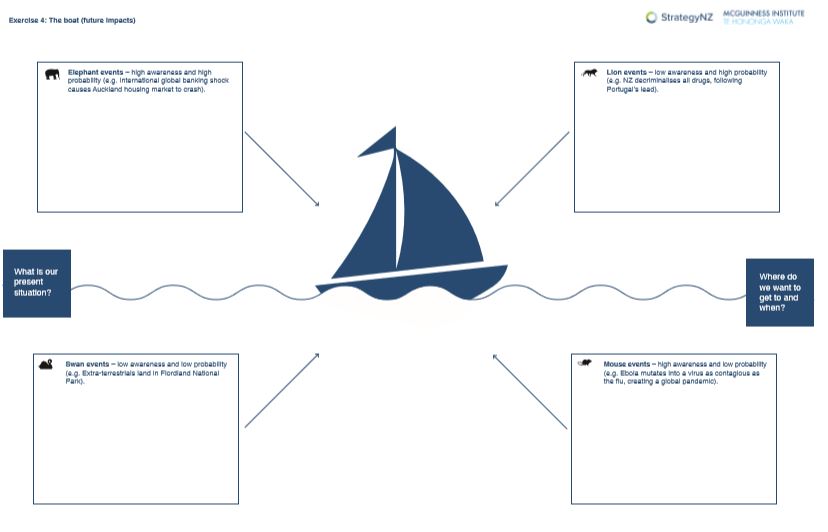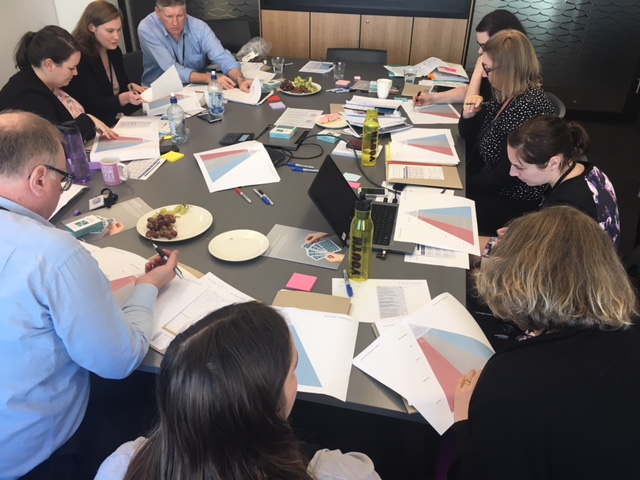On Monday afternoon the McGuinness Institute ran a two hour workshop on devising ‘good’ strategy documents for a group of Ministry of Social Development (MSD) employees working in the performance and strategy team. Members of the team were interested in growing MSD’s strategic capability and revisiting the principles of good strategic drafting. The team began with the fundamentals of strategic management. Wendy McGuinness took them through a group discussion on the distinguishing features of a strategy, a plan, and a government department strategy (GDS). This stimulated discussion on the changing usage of strategic terms over the years, which can cause confusion and presents obstacles for clear, consistent strategic planning throughout the public sector. This session emphasized the misconception that a plan is not a synonym for a strategy and clarified the important difference between these two concepts in their time-frames, scope, and levels of detail. This discussion was facilitated by Exercise One: Definitions, available to download on the McGuinness Institute Exercises and Quizzes page. There was a suggestion from the team that departments might wish to compose a department-wide glossary of strategic terms, so that strategic cohesion is improved when drafting documents.

Wendy McGuinness leads the session on distinguishing ‘strategy’ from ‘plan’
To introduce Exercise Two: The line, Madeleine Foreman gave a brief overview of good strategic practice in public sector strategic drafting. She covered the main elements of an effective strategic document and utilised examples from The GDS Index to illustrate these characteristics of ‘good’ strategy. Exercise Two focused on alignment of the existing MSD GDSs. In order to ‘get their hands dirty’ with their department’s GDSs, participants were asked to analyse the GDSs and assess the extent they possessed the elements of good strategy. This was done within a short time frame, forcing participants to make quick and intuitive judgements about the effectiveness of the strategic documents.
Exercise Three: the triangle (levels of strategy), encouraged participants to think about the different levels of strategic management within their department, and government as a whole. The triangle diagram positions department-wide policy statements as the tip of the triangle, with three strategic objectives (goals) in the second tier. The various levels of strategic documents then nest underneath these three guiding goals. The team found it difficult to position each strategy document at one level, as some of them did not necessarily fit in one place due to indeterminate strategic scope, outdated material, or wide-ranging content. This prompted a discussion on the differing levels of strategic management in government and the importance of identifying the strategic scope of each document during the drafting process.

Exercise 4: The boat (future impacts)
The last exercise (The boat: future impacts) combined the strategic focus of the group with the Institute’s work on foresight. Participants used the ForesightNZ playing cards to practice devising strategy documents under many varying contextual constraints. The cards are grouped in Event Cards and Trend Cards. Event Cards represent possible events that are categorized into one of four high impact event types, depending on two factors: how aware society is of the event and the probability of each event occurring. Trend Cards show growing changes or movement in a particular direction over time. Good strategic drafting is not just about the form of the document; it also concerns the extent to which the drafting process incorporates and responds to the external environment.
At the end of the afternoon, the observations of the group at MSD were that there is a lot of scope for coordinated, consistent advice on strategic drafting in government. There is more room for exploration of the principles of good strategic stewardship and governance in central government, and perhaps a role for departments to play in encouraging this within the annual strategic cycle.

The team at MSD identify at which strategic level their various GDS documents fit.
